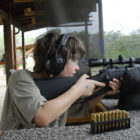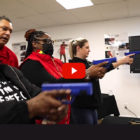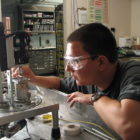
Study: As young as 12, some rural youth regularly carry handguns
|
About 25% of rural youth in a University of Washington analysis said they were as young as 12 when they began carrying handguns and 20% of the roughly 2,000 rural youth and young adults studied carried a handgun at least 40 times during the last 12 months that they self-reported that activity, according to research published this month in the Journal of the American Medical Association.








